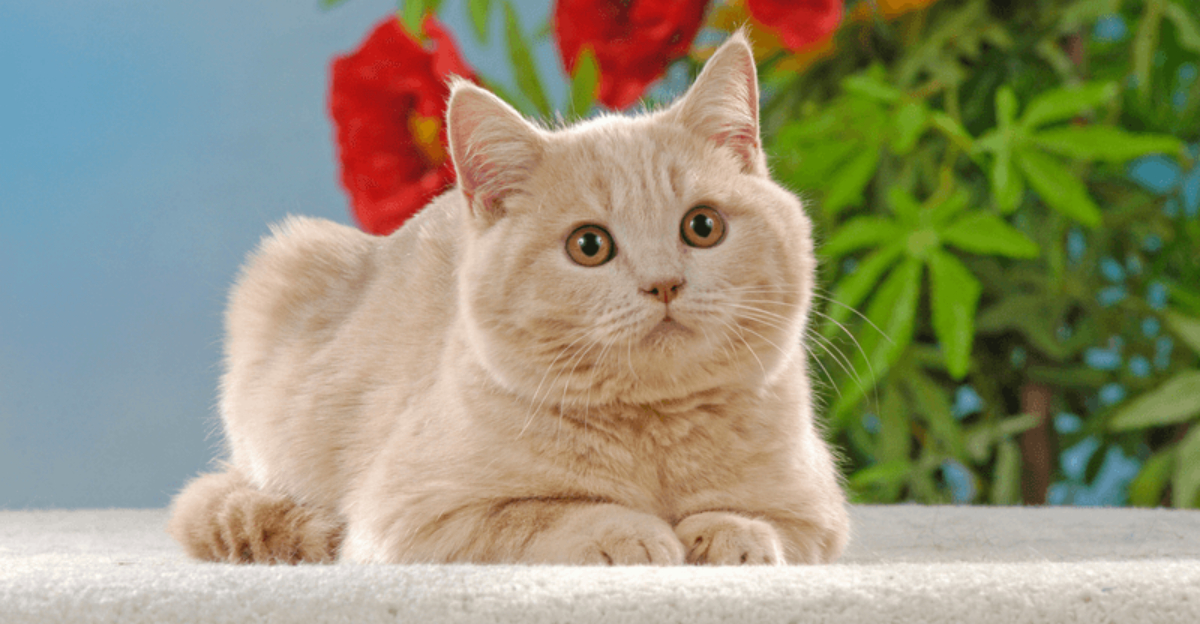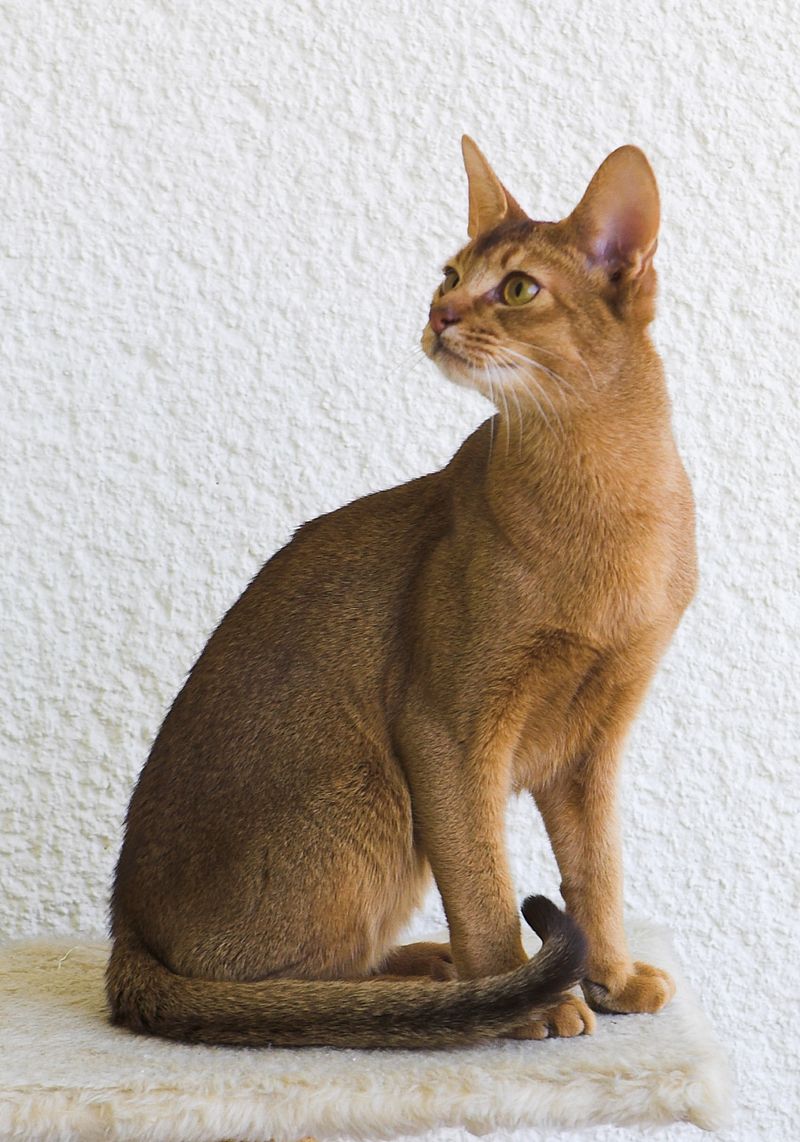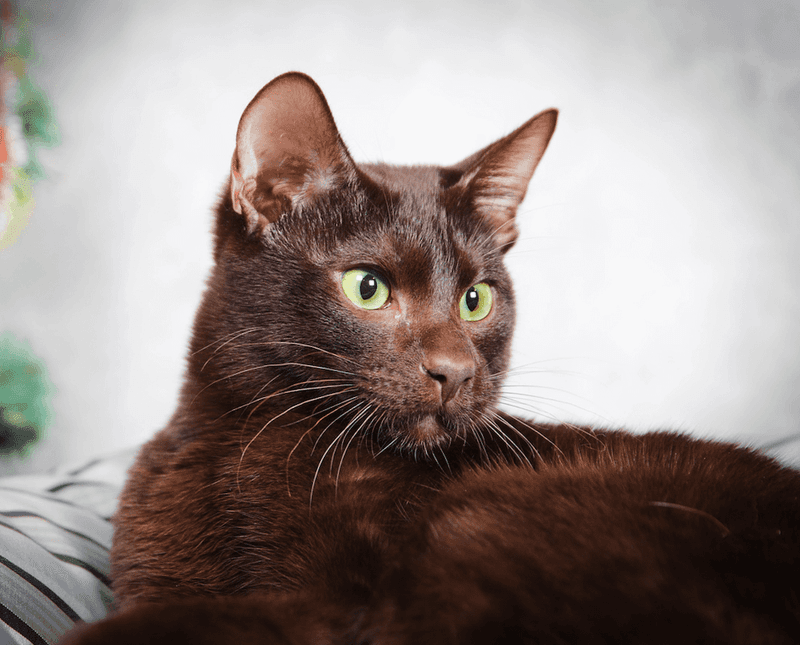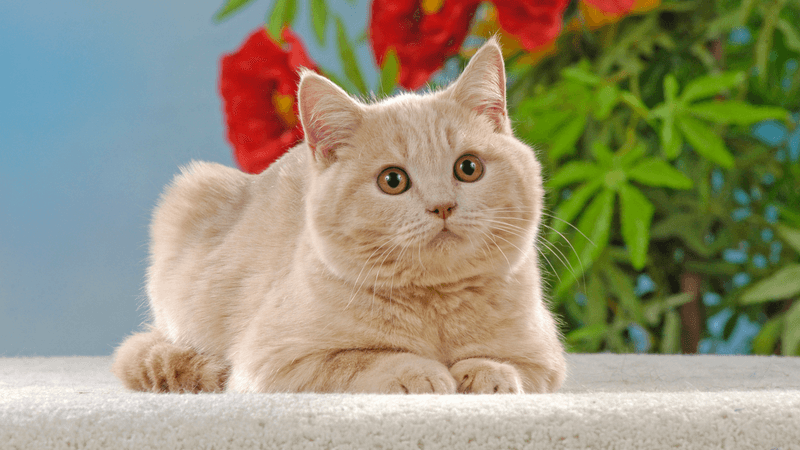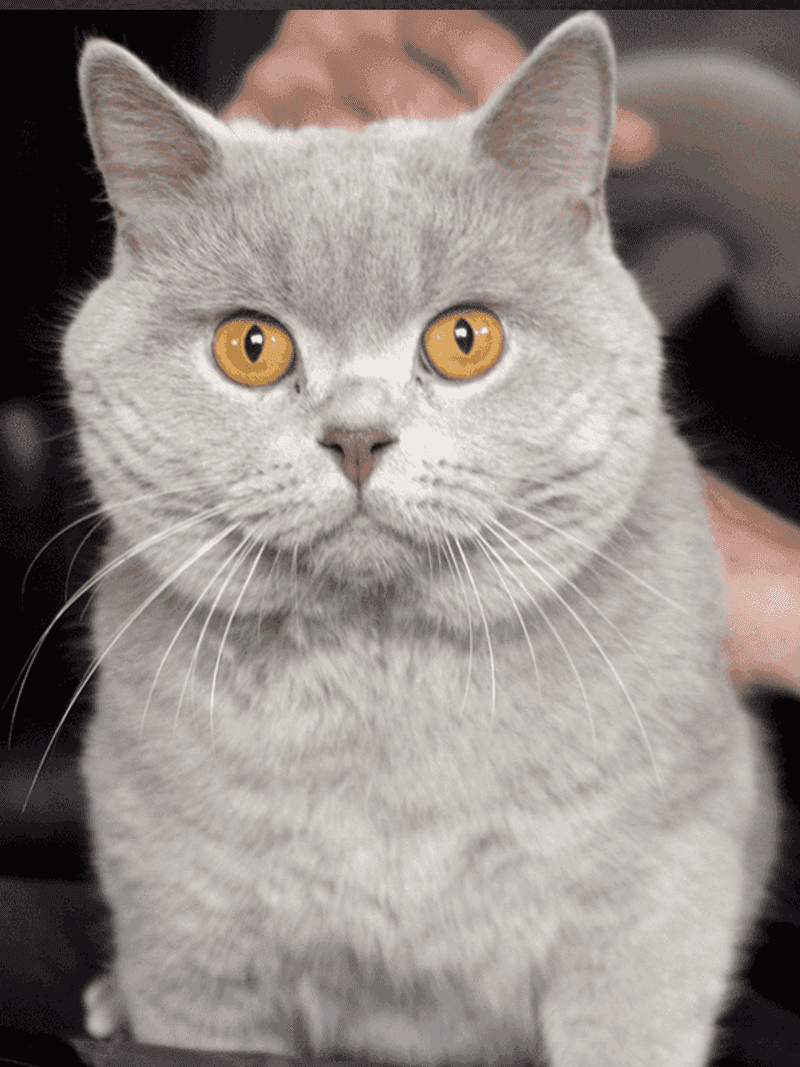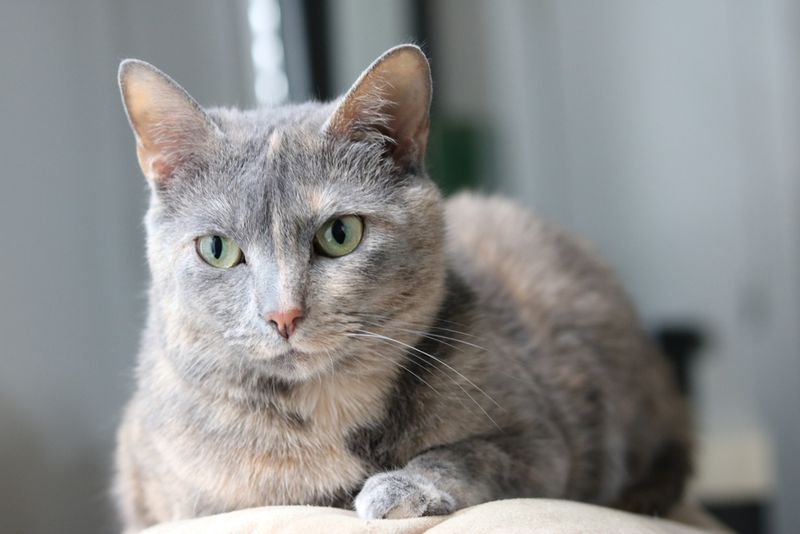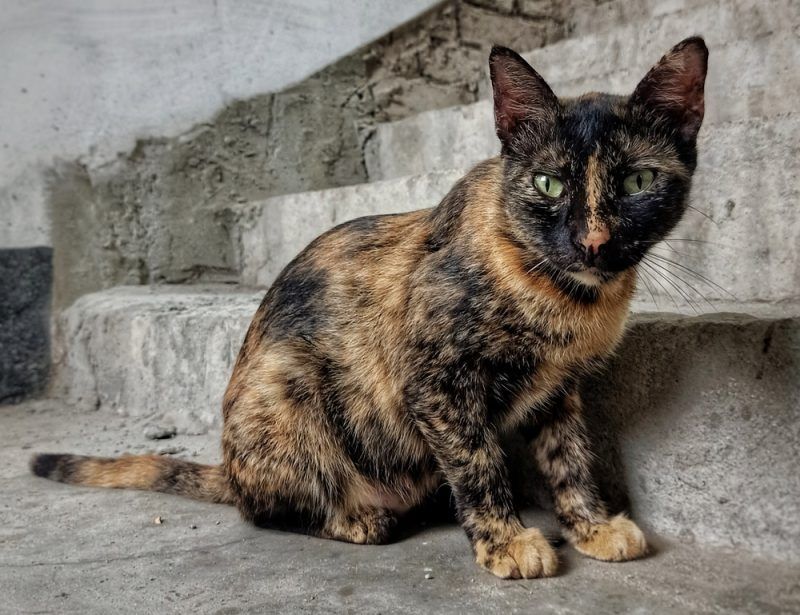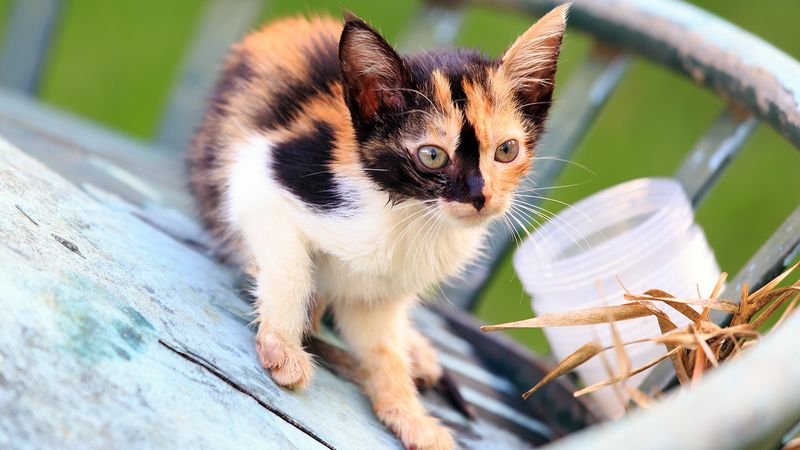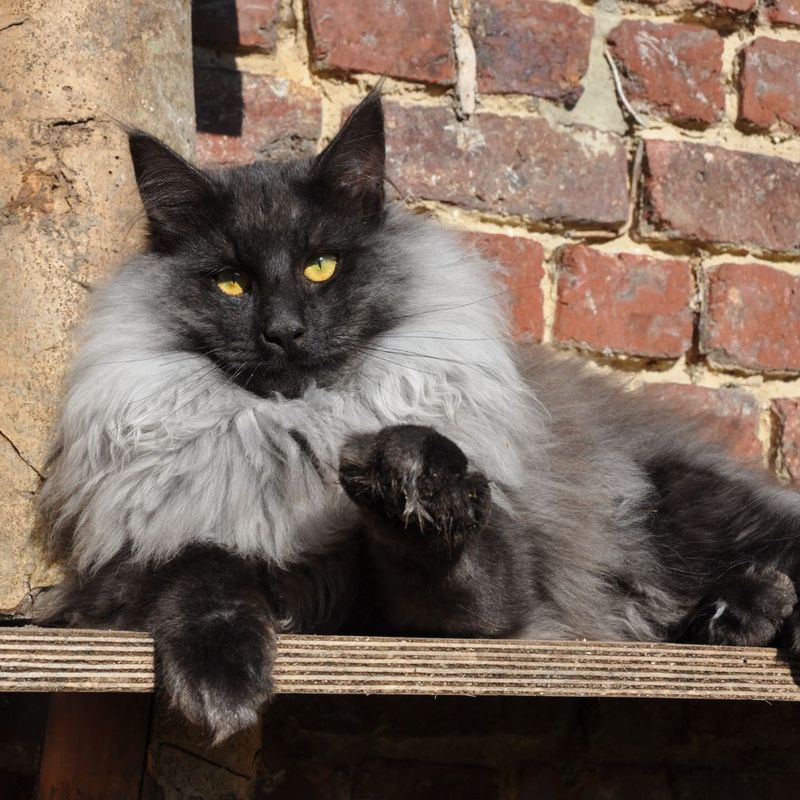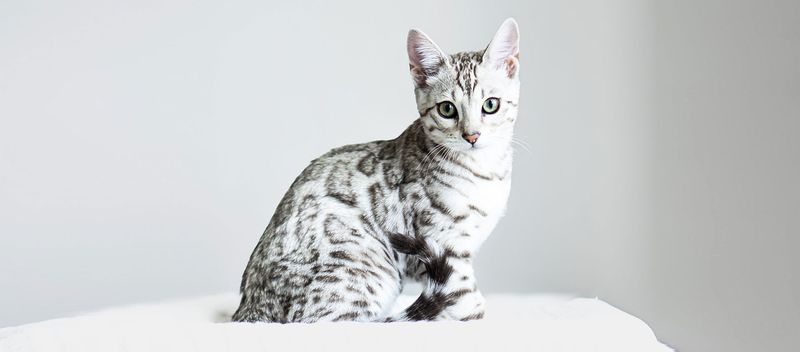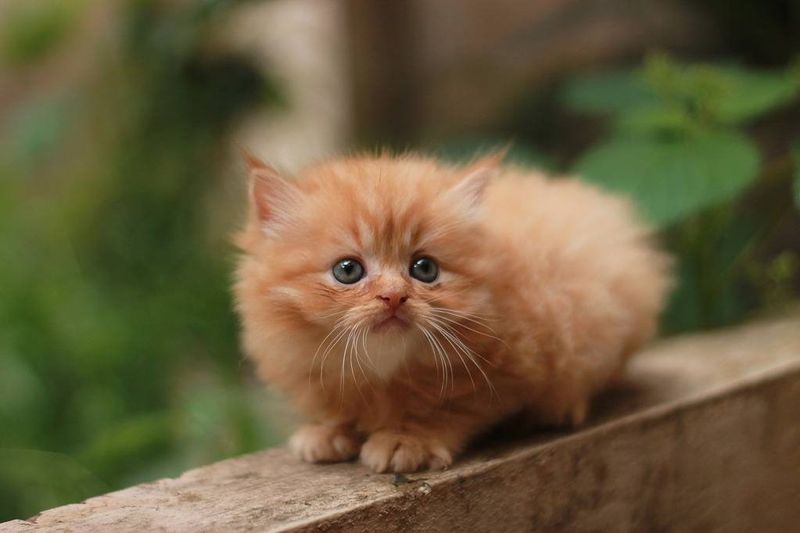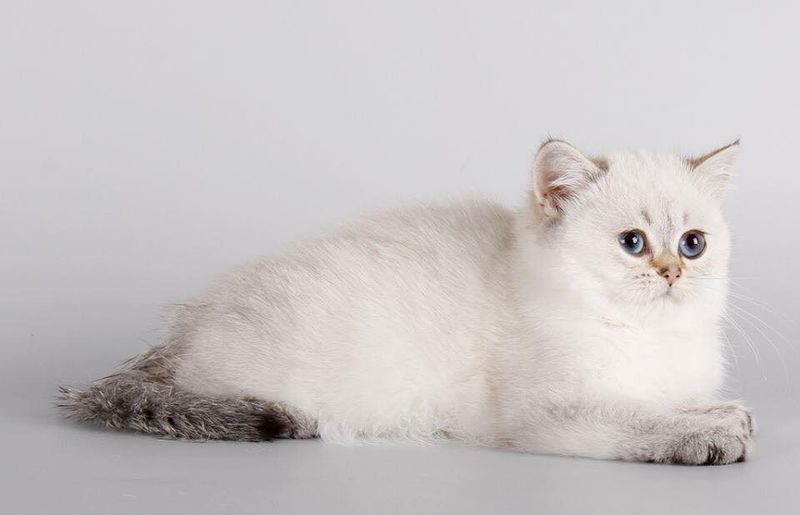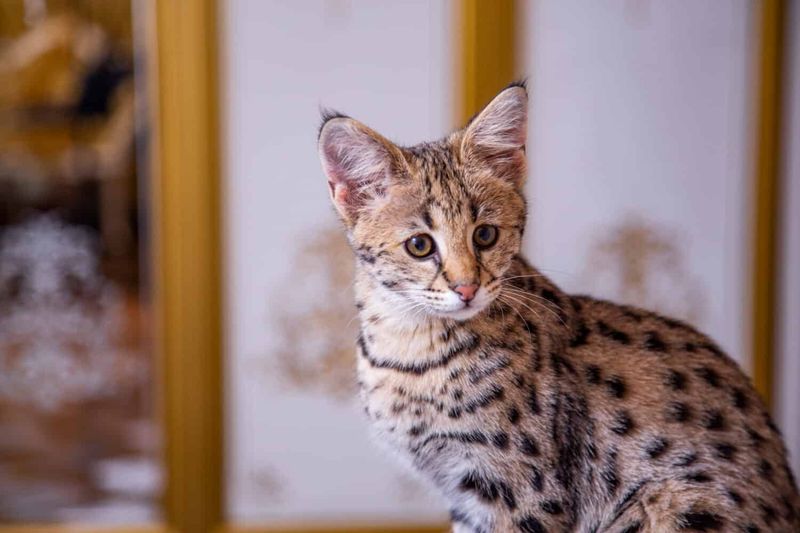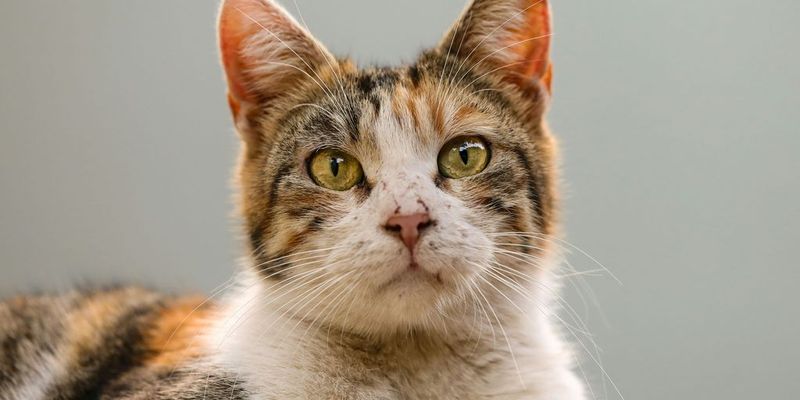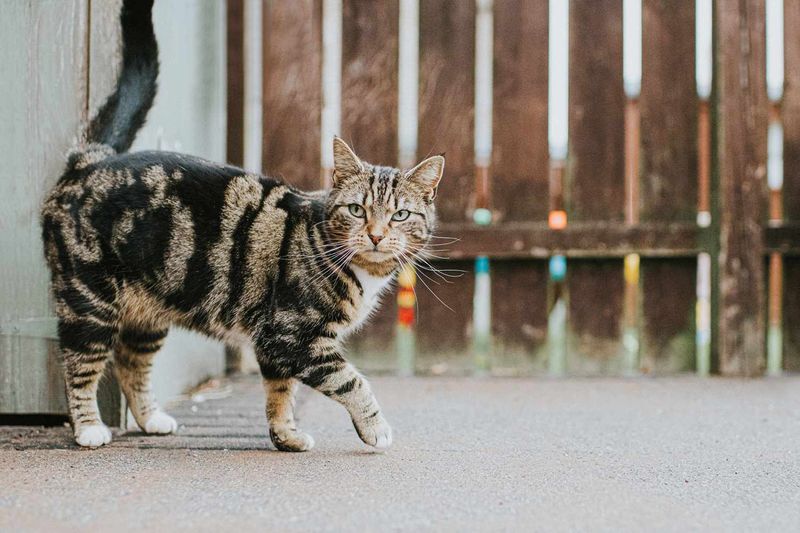📖 Table of Content:
Cat lovers know our feline friends come in an amazing variety of colors and patterns. While tabbies and black cats are common sights in many homes, some cat colors are so rare you might never see them in person. From striking cinnamon coats to intricate tabby patterns, these unusual colorations happen because of special genetic combinations. Let’s explore the 14 rarest cat colors and patterns that make these kitties truly one-of-a-kind.
1. Cinnamon
Warm and spicy-looking, cinnamon cats showcase a rich reddish-brown coat that’s often mistaken for orange at first glance. This color results from a specific genetic mutation of the black color gene.
Cinnamon is most commonly seen in Oriental breeds like the Siamese and Abyssinian. The color appears when a cat inherits two copies of the recessive cinnamon gene.
Under sunlight, these cats’ fur takes on a particularly striking glow, highlighting subtle variations in their coat. Their nose leather and paw pads typically match their coat with a pinkish-brown hue.
2. Chocolate
Chocolate cats feature a rich, warm brown coat resembling milk chocolate or dark cocoa. This coloration stems from a recessive variant of the black gene, making it much less common than standard black fur.
Breeds like the Havana Brown showcase this color as their signature trait. Chocolate cats often have matching brown nose leather and paw pads, creating a coordinated look.
The shade can vary from lighter milk chocolate to deeper mocha tones. In Siamese and other pointed breeds, the chocolate points create a striking contrast against their creamy body color, making for an elegant appearance that cat enthusiasts particularly prize.
3. Fawn
The delicate coloring of fawn cats ranges from pale beige to a warm, dusty rose, creating a gentle glow. This unique shade comes from a dilution of the rare cinnamon gene.
Finding a true fawn cat requires specific breeding circumstances and careful genetic selection. Their coat has a warm undertone that distinguishes them from other light-colored cats.
The color extends to their nose leather and paw pads, which appear in a soft pink shade. Fawn is particularly striking in Oriental breeds like the Siamese and Abyssinian where it creates a beautiful contrast with their bright blue eyes.
4. Lilac
The distinctive frosted look of lilac cats comes from their pale dusty lavender-gray fur. This shade is a double dilution of the uncommon chocolate color.
The coat has a distinctive pinkish undertone that sets it apart from blue or gray cats. Lilac cats are born with this color and don’t develop it over time.
Their nose leather and paw pads come in a matching lavender-pink shade. This color appears most frequently in Siamese, Colorpoint Shorthair, and Oriental breeds, where it creates an ethereal look that many breeders and cat enthusiasts consider among the most beautiful feline colorations.
5. Blue-Cream
Blue-cream cats showcase a stunning mixture of dilute blue-gray and cream patches blended throughout their coat. This uncommon coloration occurs almost exclusively in female cats due to its link to the X chromosome.
The patches vary in size and distribution, making each blue-cream cat uniquely patterned. Their appearance resembles a softer, more muted version of the tortoiseshell pattern.
Blue-cream cats often display different colored paw pads corresponding to the fur color above them. This beautiful mix happens when a cat inherits both the blue dilution gene and the orange gene, creating a gentle marbling effect that changes subtly in different lighting conditions.
6. Tortoiseshell
The captivating black and orange patchwork of tortoiseshell cats lacks any white. Their distinctive coloring comes from X-chromosome inactivation, making the vast majority female.
The rare male tortoiseshell has an extra X chromosome, occurring in roughly 1 in 3,000 cats. Each tortie has a completely unique pattern – no two are exactly alike.
Many cat lovers believe these cats have a distinctive personality type often called “tortitude” – a spirited, independent nature with plenty of sass. The patches can be brindled or clearly defined, and some torties show tabby markings within their colored patches, adding another layer of complexity to their already stunning coats.
7. Calico
Calico cats sport a tricolor coat featuring patches of white, black, and orange. This striking pattern requires specific genetic circumstances, making male calicos extremely rare – about 1 in 3,000 cats.
The white in their coat comes from a separate gene that prevents color development in certain areas. Traditional calicos have large, clearly defined patches, while “dilute calicos” show softer gray and cream colors instead of black and orange.
Japanese culture considers calicos lucky – they’re featured as the beckoning Maneki Neko figurines in businesses. In the United States, they’re sometimes called “money cats” based on the belief they bring good fortune to their owners.
8. Smoke
When still, smoke cats appear to have one solid color, but movement reveals a hidden contrast. The white base of their fur beneath darker tips creates a unique shifting appearance.
When a smoke cat is still, you see only the dark tips of their fur. But when they run or stretch, the white undercoat becomes visible, making them seem to shimmer between two colors.
This pattern works with many colors – black smoke is most common, but blue smoke, chocolate smoke, and even red smoke exist. The contrast between the dark outer coat and pale undercoat creates a mysterious, smoky appearance that shifts dramatically in different lighting conditions.
9. Silver
The unique hair structure of silver cats gives them a striking metallic sheen. Their fur strands feature a white base with colored bands and tips that shimmer in the light.
This coloration often appears with tabby patterns, forming the stunning silver tabby. The contrast between the silver background and darker markings creates exceptional definition in their pattern.
Silver cats’ fur typically shows less variation in shade compared to other colors. The inhibitor gene responsible for silver coloring prevents pigment from developing in the lower portion of each hair shaft, resulting in the distinctive silver appearance that seems to catch and reflect light in a way other cat colors don’t.
10. Golden
The warm, honey-like coat of golden cats combines a creamy undercoat with darker golden tips, creating a lovely layered effect.
This coloration appears most commonly in Persian and Siberian cats. Unlike orange or red cats, goldens have a distinct warm undertone without any hint of brown or gray.
Golden cats often have green or copper eyes that complement their luxurious coat. The coloration results from a specific combination of genes that limits pigment production in a way different from silver cats, allowing warm tones to develop while maintaining the lighter undercoat that gives the fur its luminous quality.
11. Shaded
With color primarily at the ends of their hairs, shaded cats display a gentle gradient effect. Their pale undercoat contrasts with the darker tips, giving the illusion of a soft color veil.
This pattern works with various colors – silver-shaded, golden-shaded, and even shaded versions of other colors exist. The face, back, sides and tail show the most shading, while the chest and belly remain lighter.
Shaded cats differ from smoke cats in the amount of tipping – smokes have color on more of each hair shaft. The overall effect is sophisticated and subtle, with the cat appearing to glow from within as light plays across their coat.
12. Spotted
Spotted cats showcase distinct oval or round spots arranged in patterns across their bodies. This wild-looking pattern evolved from the tabby pattern through selective breeding and genetic mutations.
The Egyptian Mau naturally develops spots, while breeds like the Ocicat and Bengal have been specifically bred for their spotted coats. Spot size, shape, and arrangement vary widely between breeds and individual cats.
Some spotted cats have rosettes – spots with darker outlines surrounding a lighter center – similar to those seen on leopards and jaguars. The spotted pattern serves as excellent camouflage in the wild, breaking up the cat’s outline in dappled light and helping these domestic cats maintain a connection to their wild ancestors.
13. Mackerel Tabby
The sides of mackerel tabbies are marked by thin stripes running parallel, resembling a fishbone. Their spine features a dark line with branching stripes like ribs.
This is actually the original wild-type tabby pattern found in the African wildcat, ancestor of domestic cats. The stripes serve as effective camouflage in grassy or wooded areas.
Mackerel tabbies always have the characteristic “M” marking on their foreheads, along with pencil lines on their faces and dark lines extending from their eyes. While tabby patterns are common, pure mackerel patterns with clear, unbroken stripes are relatively rare compared to the more frequently seen classic tabby or spotted variations.
14. Classic Tabby
The distinctive pattern of classic tabbies includes large, bold swirls on their sides like marble cake or bullseyes. Thick, curved stripes form noticeable circles and spirals, especially on the flanks and shoulders.
The pattern includes the signature tabby “M” marking on the forehead and often features a butterfly pattern across the shoulders. Classic tabbies have bands around their legs and tail, with the tail showing distinct rings.
While tabby patterns are common, the true classic pattern with well-defined swirls and bullseyes is less frequently seen in its perfect form. The pattern varies in different colors, with brown classic tabbies being more common than silver, blue, or red classic tabbies.
